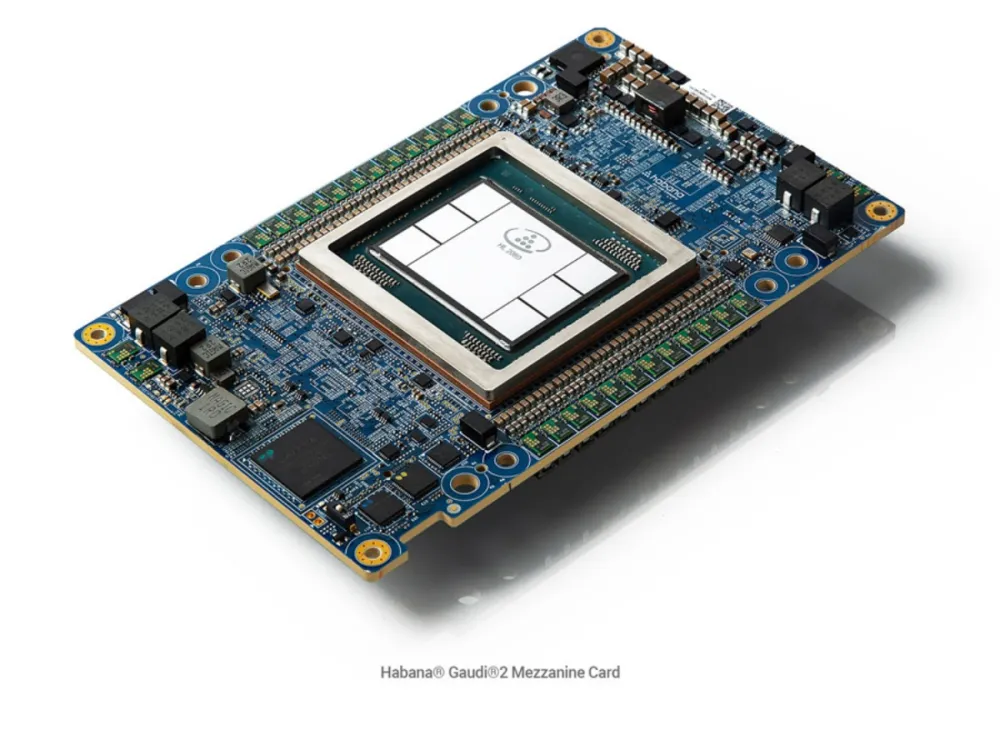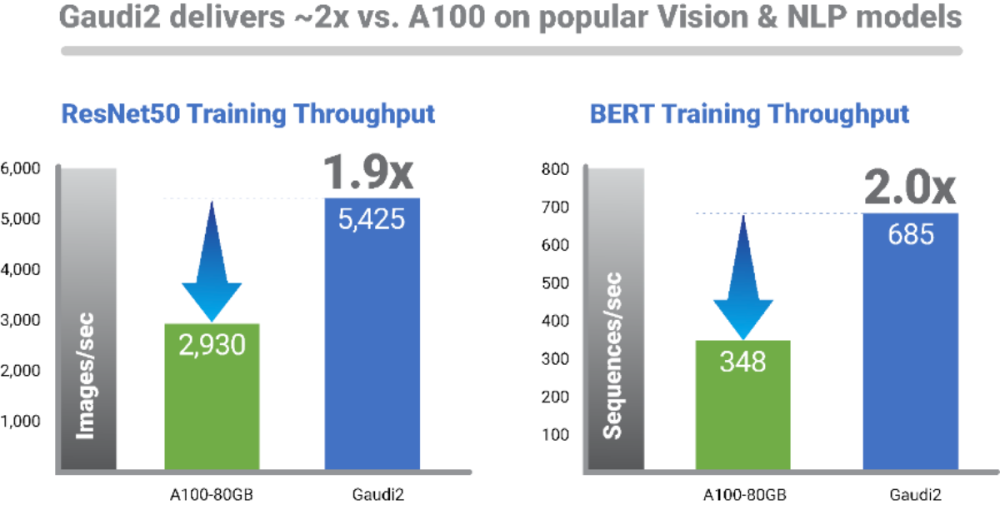Intel’s Habana Labs launched the second-generation AI processor
At this Intel VisiON event, Intel announced that its artificial intelligence team, Habana Labs, announced the launch of the second-generation artificial intelligence processor which contains Habana Gaudi2 for training, and Habana Greco for inference.

Among them, the data throughput of Habana Gaudi2 used for training in the ResNet-50 machine vision model and BERT natural language processing model is about twice that of NVIDIA A100, and Habana Greco for inference can correspond to execution efficiency.

Both processors are produced on a 7nm process and are open to existing Habana processor users. It has also cooperated with Supermicro to launch the Gaudi2 training server, which is expected to be launched in the second half of this year. The cooperation with DDN, the world’s largest private storage system company, will create a new DDN AI400X2 storage solution.
Habana Gaudi2 maintains the previous architecture and integrates HBM2E memory with a transmission bandwidth of 2.45TB per second and a total capacity of 96GB, and is equipped with 24 sets of 100GbE RoCE NIC network cards, the computing power can be expanded through the network connection. Habana Greco is expected to provide test samples in the second half of 2022 and is expected to launch in the first quarter of 2023. It has the function of on-chip media content encoding, supports common specifications such as HEVC, H.264, JPEG, and P-JPEG, and supports Bfloat 16, FP16, INT8/UINT8, INT4/UINT4 operation modes, so as to correspond to more flexible inference operations model.
Currently, Mobileye, Leidos, Supermicro, and DDN will be the first wave of Habana Gaudi2 partners. It is expected to be used in self-driving training, medical image analysis, production line inspection, and other applications. Intel will also provide SynapseAI software to make it easier for users to optimize deep learning models, and to simplify the model migration process by adding a few lines of coding.






